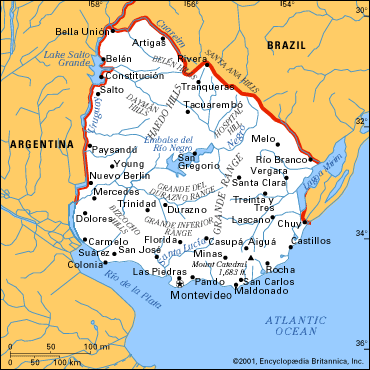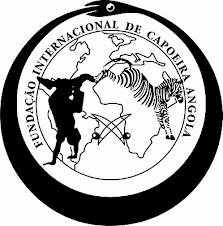
I just got back from sixteen awesome days in Salvador. Every time I go there (this was my third time) I find it harder and harder to leave. It’s interesting how people can come away with very different impressions of that city: I’ve heard it described as both “the most wonderful place on earth” and as “a thieving, whoring shithole.”
Salvador is a city of extremes. On the one hand, it positively vibrates with culture, music, religion, dance, art, life, and passion. The axé is in the air. Salvador is saturated with capoeira, with thousands of practitioners and groups that run the full spectrum of styles. The weather is gorgeous most of the year and you have your pick of nice beaches. Bahians are some of the warmest and friendliest people I’ve ever met… there’s a lot to love about Salvador.
But the city also has its dark side: its slums, poverty, drugs, prostitution, violence, injustice, and crime. The Pelourinho is full of street kids harassing tourists for money, the city center is full of homeless people sleeping on the sidewalks, prostitutes and “caçadores” (“hunters”) try to “catch” naïve foreigners. It’s not a clean city – people tend to throw their garbage on the ground, and some street corners smell like someone’s been using them for a toilet. The capoeira culture, too, has its unsavory elements: politics and group rivalries, violence in street rodas, showy and watered-down performance capoeira, etc.
I really like Salvador despite its unpleasant elements. Yes, there are some days when the constant harassment by beggars and caçadores really wears on me, but I’ve generally learned how to handle it. Yes, there is a lot of poverty, but there are also many organizations and social projects to assist those who need help. Yes, the capoeira culture is crazy, complex, competitive, and disorganized – but to me that makes it fascinating!
Anyway, during my trip I trained with Mestre Lua Rasta and his group Capoeira Angola da Rua (Street Capoeira Angola). They have an interesting style, because Lua didn’t come from a Pastinha lineage like many of the other Angola groups out there – he learned from Mestre Canjiquinha, who considered himself neither Angola nor Regional. Thus, Mestre Lua’s students play something like what I believe capoeira looked like before the Angola/Regional split – it is definitely more Angola in the kinesthetic (meaning they play with relaxed bodies, lots of feints and malícia, the typical Angola bateria and song structure and chamadas); however, they don’t play low and slow ALL the time like some contemporary angoleiros: they use moves traditionally associated with Regional like martelo, tesoura de costas, vingativa – I even saw one instructor free himself from a trap with a backflip! – and sometimes the game gets lightning fast.
Another thing I found to be unique about Angola da Rua is that the members of the group are goofy and fun. My main complaint with Angola training has always been that it’s way too serious and over-disciplined, and that it loses sight of the fact that capoeira is brincadeira (playfulness) and vadiação (chilling out, bumming around). The atmosphere of Angola da Rua, on the other hand, is more relaxed and there’s plenty of room for laughter.
Mestre Lua Rasta, too, has a sense of humor, a positive attitude, and an open mind. He sometimes stops the roda in order to tell a story or joke, and brings a terrific energy as he goes wild with the instruments and songs. He does his rodas on the street every Friday night in the Terreiro de Jesus around 9-11 PM. He welcomes anyone to play in it as long as they come in good will; I actually played there the first time I came to Salvador in 2004, and I remember being captivated by watching the incredibly skillful and humorous games among his students.
Last but not least, the group welcomed me in nicely. Not once – this is also something that has never happened to me before in an Angola group – not once did anyone condemn me as being “tainted” by my previous Regional training, or snottily inform me, “you can’t do that movement because it’s not Angola.” They accepted my game as it is and helped me improve it from where I am; never did they try to force me to imitate them exactly or conform to some sort of standard.A group with a style that really appeals to me, great energy and humor, and an emphasis on individuality and creativity in capoeira – that’s something rare to find. I really hope I can spend an extended period of time in Salvador training with them!
Another highlight of my trip was meeting Mestres Boca Rica and Curió. I met Boca Rica when he was watching a street roda in which I was playing; I sat down to rest for a while and he started a conversation, asking me where I was from and where I learned capoeira. He said he’s going to release another CD this year and I can’t wait to hear it, since I love his music. With Curió, I went to his academy to watch a class and also talked with him for a while – his training isn’t really the style for me, but he was quite nice and welcoming.
I also played for hours and hours in street rodas – some that were organized by groups with Mestres presiding, and others that arose randomly among a collection of capoeiristas. I’m thrilled that I’m starting to develop a reputation as a decent player; many people complimented my game. Now that I’m starting to enter the phase of capoeira where I know what I’m doing, in which I can give decent takedowns and strikes, I’m getting warned more often to be careful while playing in the street. Some men will not like getting one-upped by a woman in the roda – even if I just mark movements and don’t carry them to completion – and might actually hurt me.
However, I’m quite proud of the fact that I generally have enough of a sixth sense to know which rodas to stay out of and which players to stay away from, or at least how to handle them. For example, one day I noticed that there was one Mestre (who I knew had a reputation for violence) who was playing hard and rough, and I decided not to play with him. Well, unfortunately he bought the game with me. Although I was doing very non-aggressive moves, he kept trying to move in and throw nasty, fast, meia luas de compasso at knee level. I simply ended the game, breathing hard and holding my side and telling him “sorry, I’m in such bad shape, I got tired out.” Better to leave the roda healthy and let him think I’m a weakling than to try to “prove” something and leave the roda in an ambulance. It’s the type of thing you have to learn in Bahian street rodas – who you can play hard with and who you can’t, when you can joke around and when you have to be serious.


